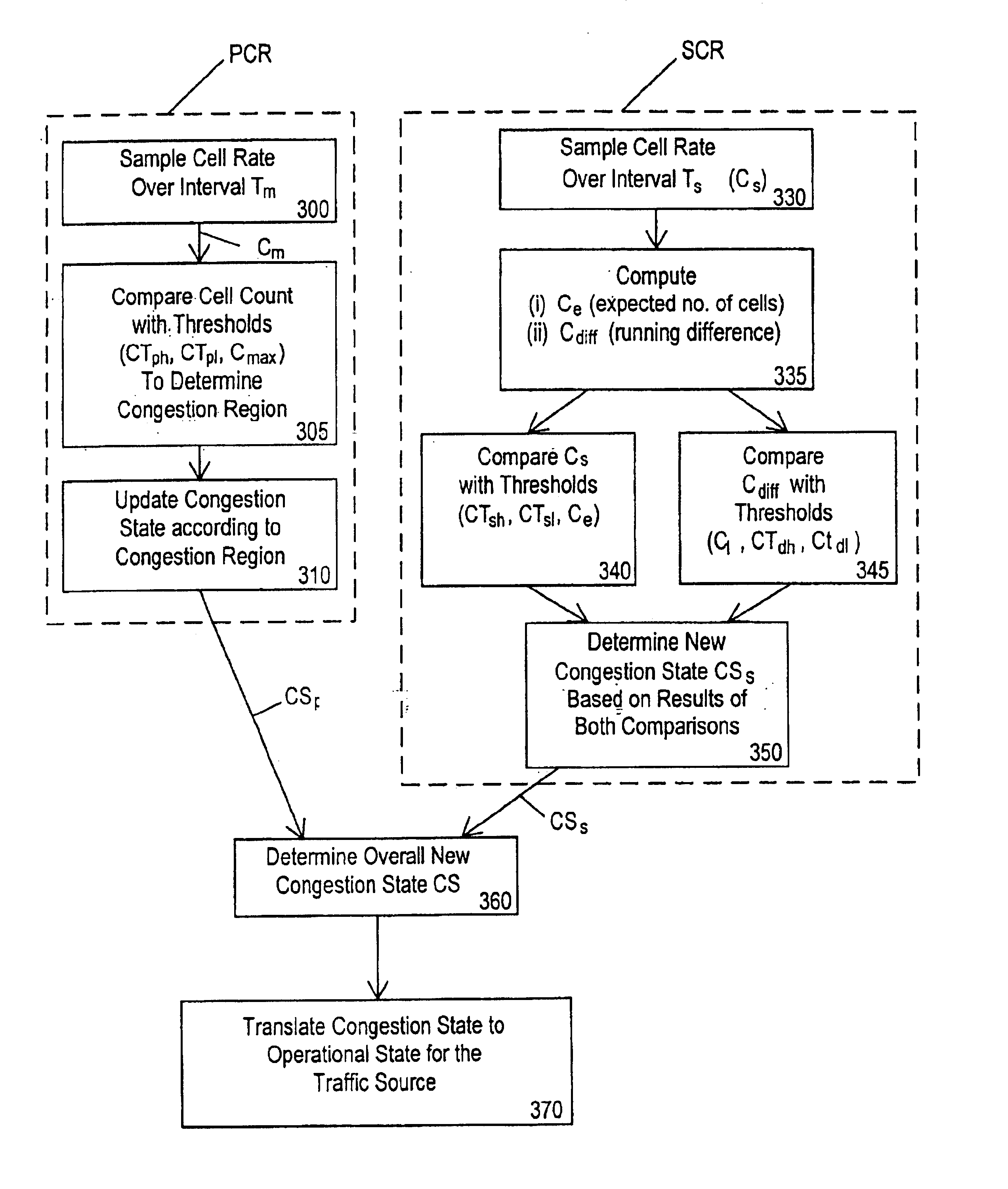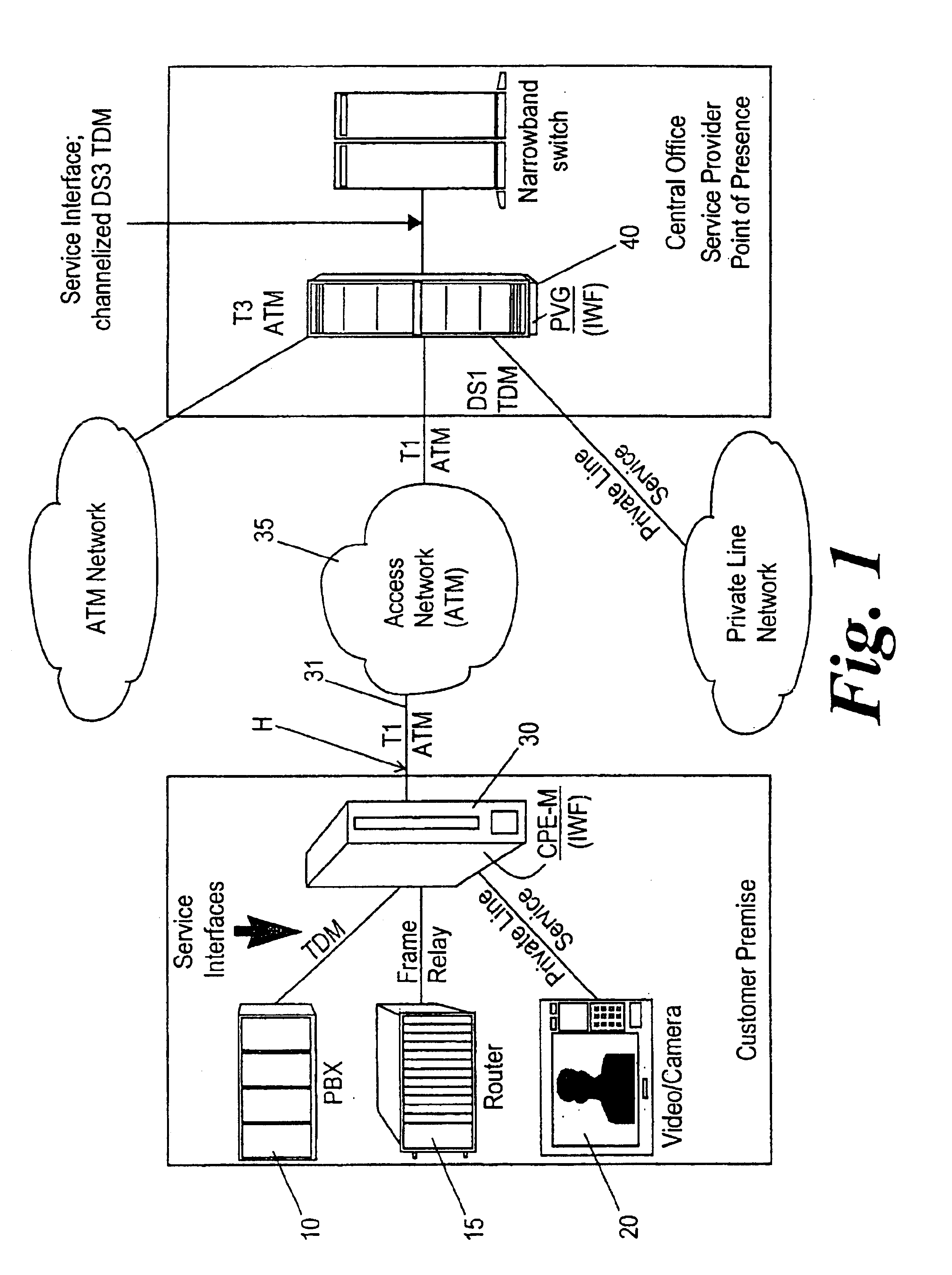Method of monitoring packet communications traffic
a packet communication and traffic monitoring technology, applied in the field of packet communication traffic monitoring, can solve the problems of inability to send all at the same time, inability to monitor packet communication traffic, and inability to tolerate buffering of delay-sensitive traffic such as voice, and achieve the effect of accurate determination of peak cell ra
- Summary
- Abstract
- Description
- Claims
- Application Information
AI Technical Summary
Benefits of technology
Problems solved by technology
Method used
Image
Examples
example 1
[0176]Min_Voice_Rate=24 kb / s[0177]Max_Voice_Rate=64 kb / s[0178]Modem_Rate=64 kb / s[0179]Silence Suppression=on congestion
[0180]
VoicebandVoicebandDataVoiceDataOperationalDigital DataCongestionOperationalOperationalStateOperationalStateStateState(Violating)StateCS0OS0VBD_OS0VBD_OS0DOS0CS1OS1VBD_OS0VBD_OS0DOS0CS2OS3VBD_OS0VBD_OS0DOS0CS3OS5VBD_OS0VBD_OS0DOS0CS4OS5VBD_OS0VBD_OS2DOS1
example 2
[0181]Min_Voice_Rate=16 kb / s[0182]Max_Voice_Rate=32 kb / s[0183]Modem_Rate=64 kb / s[0184]Silence Suppression=on
[0185]
VoicebandVoicebandDataVoiceDataOperationalDigital DataCongestionOperationalOperationalStateOperationalStateStateState(Violating)StateCS0OS3VBD_OS0VBD_OS0DOS0CS1OS5VBD_OS0VBD_OS0DOS0CS2OS7VBD_OS0VBD_OS0DOS0CS3OS7VBD_OS0VBD_OS3DOS1
example 3
[0186]Min_Voice_Rate=16 kb / s[0187]Max_Voice_Rate=32 kb / s[0188]Modem_Rate=32 kb / s[0189]Silence Suppression=on congestion
[0190]
VoicebandVoicebandDataVoiceDataOperationalDigital DataCongestionOperationalOperationalStateOperationalStateStateState(Violating)StateCS0OS2VBD_OS1VBD_OS1DOS0CS1OS3VBD_OS1VBD_OS1DOS0CS2OS5VBD_OS1VBD_OS1DOS0CS3OS7VBD_OS1VBD_OS1DOS0CS4OS7VBD_OS1VBD_OS3DOS1
PUM
 Login to view more
Login to view more Abstract
Description
Claims
Application Information
 Login to view more
Login to view more - R&D Engineer
- R&D Manager
- IP Professional
- Industry Leading Data Capabilities
- Powerful AI technology
- Patent DNA Extraction
Browse by: Latest US Patents, China's latest patents, Technical Efficacy Thesaurus, Application Domain, Technology Topic.
© 2024 PatSnap. All rights reserved.Legal|Privacy policy|Modern Slavery Act Transparency Statement|Sitemap



